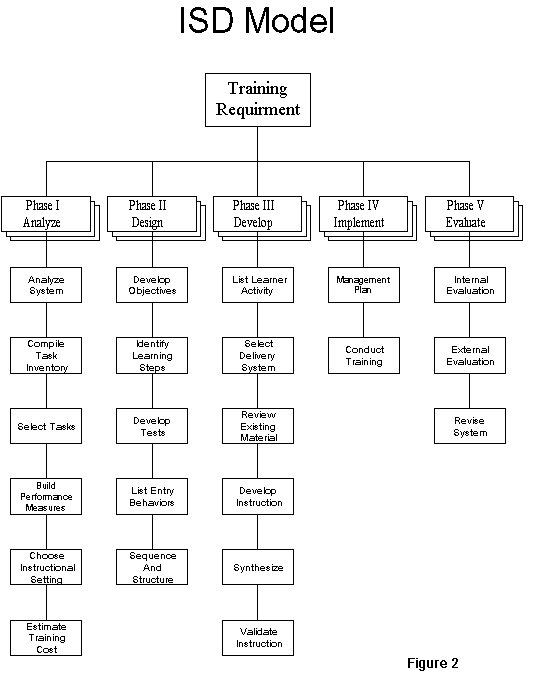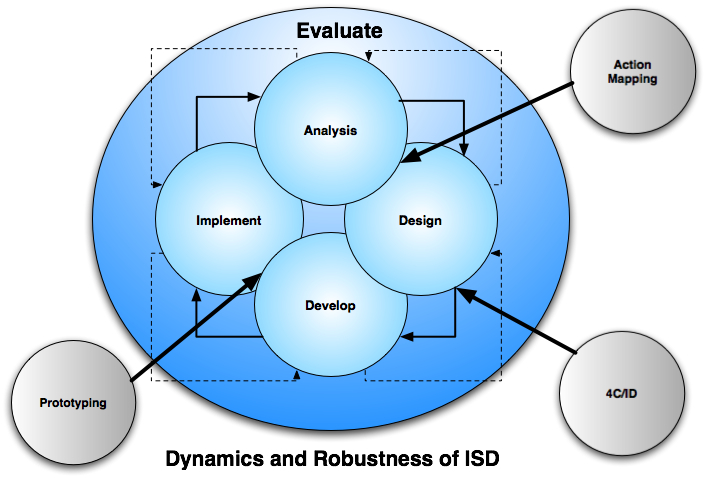In a previous post I wrote about the dynamics of ISD in response to Ellen Wagner's blog in which she noted that the biggest complaint about ADDIE is that it is too linear. In her post Ellen states that ADDIE is a process model, not a learning model. That's quite true, but now we have to ask what is the purpose of that process? And it is not instruction, but rather learning. That is, instruction is the means but learning is the real goal.
While some may think this is just a way to give ADDIE a new makeover, it is actually an older concept than the dynamic evolution of ADDIE for Bèla Bànàthy, an instructional system design pioneer, wrote about this in 1968. In his book, Instructional Systems, Bànàthy noted that in such a system instruction is part of the process while learning is the main purpose (to gain knowledge and skills). He also noted, "The effectiveness of an instructional system, therefore, can be measured by assessing the degree to which it provides for the learner a system for learning. An instructional system serves its purpose to the extent to which it brings about in the environment of the learner all the possible interactions that result in the attainment of the desired performance."
Since learning is the true purpose of ISD or ADDIE, then it has to be even more robust. However, we must first make a distinction between two terms — Instructional System Design (ISD), which includes ADDIE, and Instructional Design (ID). And for that we can thank Jerome van Merriënboer who discusses the two terms in his book, Training Complex Cognitive Skills.
ISD has a broad scope and typically divides the instructional process into five phases:
- analysis
- design
- development or production
- implementation or delivery
- evaluation
ISD models provide guidelines and directions for performing the activities in each of the five phases. The activities in the phases are normally similar to this:

Click image to enlarge
ID models on the other hand are less broad in scope and typically focus on the first two phases of ISD — analysis & design. They concentrate on the job and task analysis and the conversion into a learning strategy & a blueprint ready for production. Having less scope they can go into greater detail. Examples of ID are Merrill's Component Display Theory and Reigeluth's Elaboration Theory
The broad scope and heuristic method of ISD has often been criticized by others because it tells learning designers what to do, but not how to do it. Yet it is this broad and sketchy nature of ISD that gives it such great robustness. Merriënboer writes, "the phases may be listed in a linear order, but in fact are highly interrelated and typically not performed in a linear but in an iterative and cyclic fashion." He further notes that other ID and learning models can be used in conjunction with ISD.
Thus, ISD basically becomes plug and play — you add other components to it on an as-needed-basis. For example, the ISD model below has Action Mapping, 4C/ID, and Prototyping plugged into it for designing a robust learning environment for training complex skills:

Click image to enlarge
The ISD model uses the additional components to extend its capabilities:
- Action Mapping is used for the task analysis and to help pinpoint the learning objectives
- 4C/ID is used to design the instruction for complex cognitive skills
- Prototyping is used to test the instruction and for rapid design
- The ISD model helps to ensure all essential requirements are performed
Taking full advantage of the full evolutionary growth of ISD provides a dynamic and extendable model that provides a process for creating a viable learning process. How have you extended the capabilities of ISD?
References
Banathy, B. (1968). Instructional Systems. Palo Alto, California: Fearon Publishers.
van Merrienboer, J.J.G. (1997). Training Complex Cognitive Skills: A Four-Component Instructional Design Model for Technical Training. Englewood Cliffs, New Jersey: Educational Technology Publications.
No comments:
Post a Comment